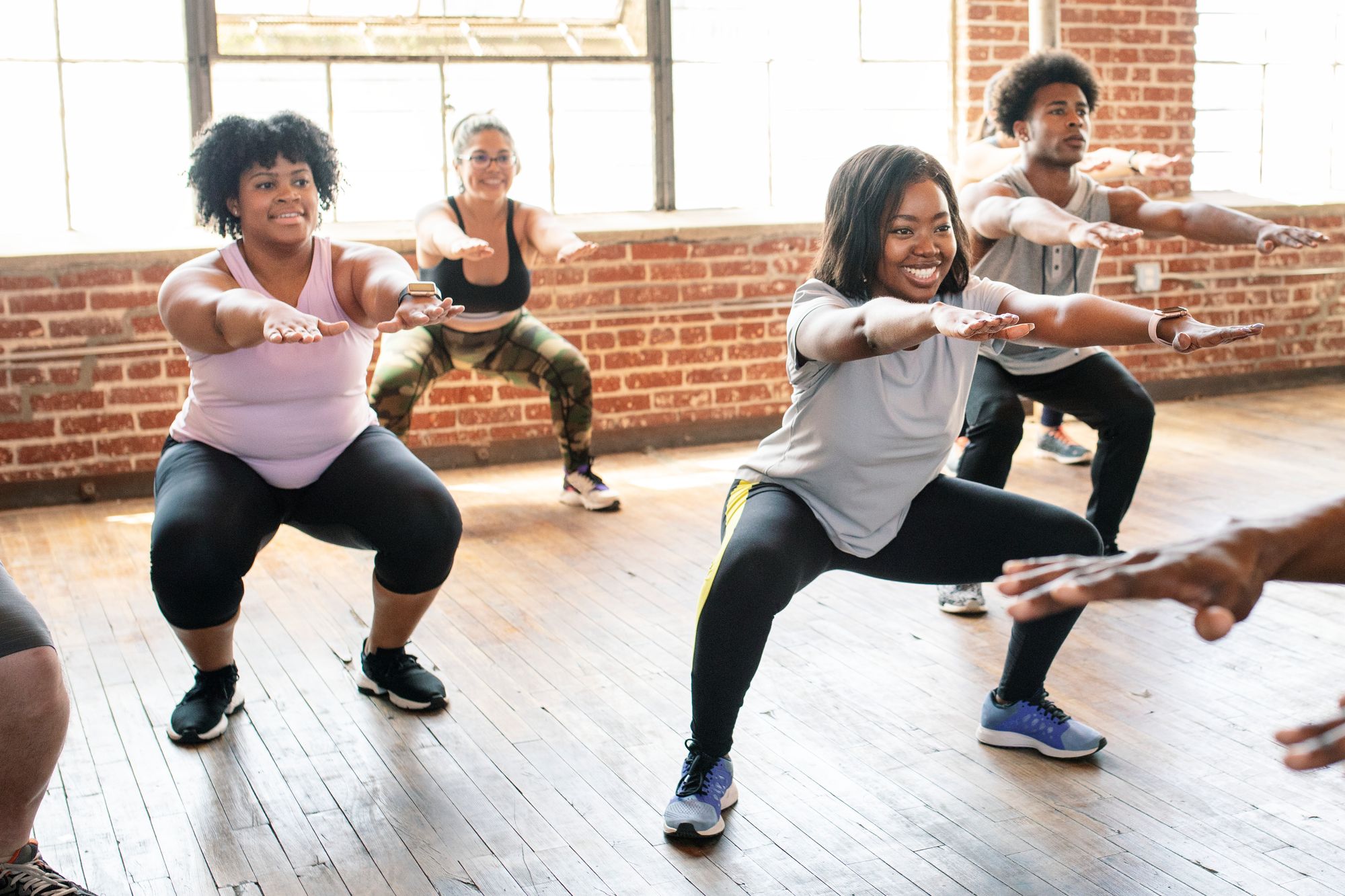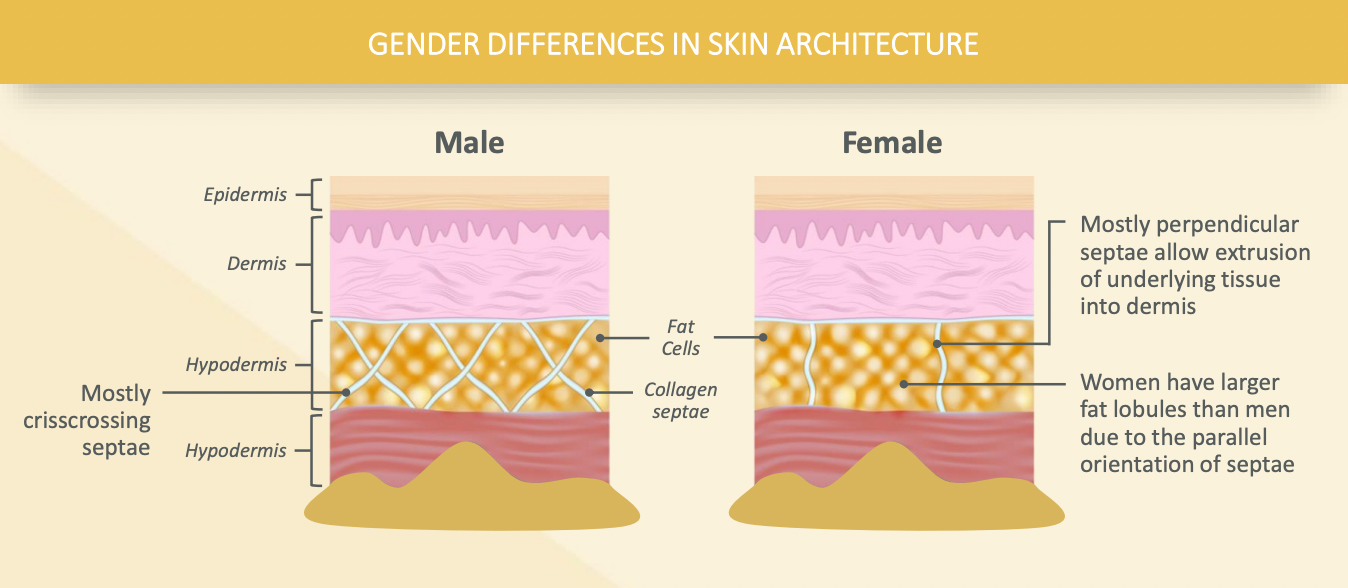Want to Get Rid of Your Cellulite? Here’s What You Should Know
Lumpy. Dimpled. Wrinkled. Furious at the thought of your skin's appearance? (Same.) Here's what to know if you want to get rid of your cellulite.

Lumpy. Dimpled. Wrinkled.
While these terms are typically used to describe cottage cheese, they may also paint an accurate picture of what your thighs, bum, and arms look like. No thanks to cellulite 😮💨
And because of it, you feel deeply self-conscious and insecure whenever you wear:
🩳 Something short/revealing/supposedly “sexy”
👚 Anything that exposes even an inch of your arms
Sick of the sleeves-and-long-bottoms-always life, you've tried: dry brushing, coffee scrubs, sugar scrubs, expensive creams, inexpensive creams — everything, save for shelling out a couple of Ks you don't have on invasive treatment options.
To no avail.
Which makes you wonder, “Is it time to get a medical procedure? To get rid of my cellulite once and for all?” Um, well, you might want to read this article first before calling a clinic.
What is cellulite?
Contrary to popular belief, cellulite isn’t a special type of tissue.
Instead, it’s simply the visible result of fat deposits pushing up against the connective tissue just beneath the skin.
Find that hard to visualize?
This might help: think of what'll happen if you push your palm hard against a metal sieve. Little lumps of flesh will bulge out on the other side, right?
Yep. That's what's happening with cellulite: your palm = fat deposits and the metal sieve = your connective tissue.
Cellulite is more common in women (the condition affects 90% of women and 10% of men) because of two reasons:
- Connective tissue structure: In women, a greater percentage of the fibrous connective tissues run perpendicular to the skin surface. On the other hand, men's fibrous connective tissues tend to crisscross, allowing for a more “well-balanced” distribution of pressure from the fat deposits.
- Estrogen (the “female sex hormone”) and fat distribution: Estrogen causes a typical “female fat distribution pattern” in the breasts, buttocks, and thighs — regions most prone to cellulite. It’s also worth noting that women typically carry more fat than men. On average, women have 6 to 11% more body fat than men (more fat deposits = more pressure = more visible cellulite).

Bad news: you can’t get rid of cellulite
Here’s the (unfortunate) truth. You cannot get rid of cellulite — not in your legs or arms, not anywhere. That’s because the condition comes down to a complex interplay between:
- Skin thickness: The thicker your skin, the better it can "resist" the upwards pressure by your fat.
- Structure of your fibrous connective tissues: As mentioned earlier, you’re likelier to experience cellulite if you have a higher percentage of connective tissues running perpendicular to the skin surface.
- Fat distribution: How is fat distributed around your body? How much fat are you carrying?
Many experts agree that even the leanest person can still have cellulite (so, yes, your body fat percentage can play a role in cellulite — but it’s not The Most Important Factor).
Wait a minute. So, there’s no way for you to get rid of cellulite? At all?
What about medical treatment options, like laser therapy? While some have shown promising results, they’re often expensive and may not result in long-term, lasting results (in fact, certain treatments are known to make the dimpling worse!)
But? You could reduce its appearance
Hmm … what now if you don’t have the spare cash to fritter away on a cellulite treatment that may (or may not) work long-term?
Well, you cannot get rid of cellulite — but nobody said you couldn't try minimizing its appearance!
How? Answer: lowering your body fat percentage to a reasonable extent (please do not go any lower than 6% if you’re a man and 14% if you’re a woman).
Here are two things you could do.
#1: Create and stick to a calorie deficit
To lose fat, you must eat fewer calories than your body burns.
Um, how many would that be? Find out in this article; it guides you through the process of calculating your daily calorie intake needs.
Of course, you shouldn't only care about calories when it comes to your nutrition. Not all calories are made equal.
For example, 100 calories from a burger (a highly processed food) wouldn't be as good for your health or satiety as 100 calories from a shrimp salad.
Psst: check out the following articles to learn how you could better achieve a calorie deficit without running into crazy hunger pangs or malnutrition issues:



#2: Stay consistent with a workout routine
Honestly, there is a hard limit to how much you can lower your calorie intake.
If you’re not keen on eating one meal — or working with a meager budget of 1,200 calories — a day, you’ll have to increase your daily calorie expenditure through exercise.
Do a combination of cardio and resistance training (the latter may help “firm up” the look of your muscle groups, minimizing the appearance of cellulite, too).
New to fitness? Don’t worry; the following articles will get you up to speed real quick:



Cellulite is perfectly normal
What if you're steadily moving closer to your goal body fat percentage, but your skin still looks like the furthest thing from silken tofu?
It might be time for a mindset change.
Stop viewing cellulite as an imperfection you need to get rid of. Instead, see it as a beautiful part of yourself. Accept it. Embrace it. Understand that it’s normal and perfectly OK.
Also, let go of the expectation that exercise and proper nutrition will get rid of your cellulite. See them as crucial tools that'll get you living your best, healthiest life instead. Look toward all their other benefits: a lower risk of chronic health conditions, improved mood, and enhanced productivity, just to name a few.
Ready to live your best, healthiest life (with or without cellulite)?
Then check out GymStreak, the smart, AI-powered workout planner that’ll help you get started — and stay committed to — your fitness journey:
Live Your Best, Healthiest Life
With or without cellulite. GymStreak will get you started. Just download the app, and you're all set.
References
ACE Fit | Percent Body Fat Calculator. (n.d.). Retrieved October 14, 2022, from https://www.acefitness.org/resources/everyone/tools-calculators/percent-body-fat-calculator/
Bass, L. S., & Kaminer, M. S. (2020). Insights Into the Pathophysiology of Cellulite: A Review. Dermatologic Surgery, 46(1), S77–S85. https://doi.org/10.1097/DSS.0000000000002388
Friedl, K. E., Moore, R. J., Martinez-Lopez, L. E., Vogel, J. A., Askew, E. W., Marchitelli, L. J., Hoyt, R. W., & Gordon, C. C. (1994). Lower limit of body fat in healthy active men. Journal of Applied Physiology (Bethesda, Md.: 1985), 77(2), 933–940. https://doi.org/10.1152/jappl.1994.77.2.933
Tokarska, K., Tokarski, S., Woźniacka, A., Sysa-Jędrzejowska, A., & Bogaczewicz, J. (2018a). Cellulite: A cosmetic or systemic issue? Contemporary views on the etiopathogenesis of cellulite. Advances in Dermatology and Allergology/Postępy Dermatologii i Alergologii, 35(5), 442–446. https://doi.org/10.5114/ada.2018.77235


